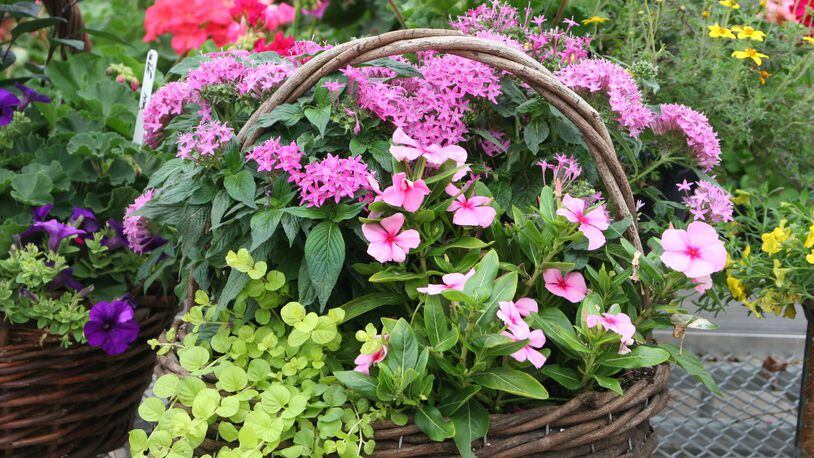Hanging baskets need some attention in order to maintain their quality. While in the greenhouse, they are being treated royally with the right amount of water and nutrients.
They are also protected from harsh elements such as heat, cold and especially wind.
We, on the other hand, hang them in full hot sun, exposed to the wind and sometimes forget to water them. Fertilizer? Well, that’s also an afterthought.
To get the most out of your hanging baskets as well as some containers, understand their maintenance needs before purchasing.
First of all, plants are put into the containers and the “soil” is actually a soilless mix. In other words, it’s not actual soil but rather a mix of organic materials that are in a perfect combination for plant roots to grow.
The mix sometimes has peat moss, perlite, vermiculite and more. It’s a mix that is designed to be lightweight (great for hanging baskets) and well-drained.
This mix allows for great root growth and plant development without the chance of overwatering and drowning the roots.
It also means that you have to water at the minimum on a daily basis and sometimes twice a day when it’s really hot and windy.
In addition, these soilless mixes don’t usually have nutrients in them to last all season. Sometimes a greenhouse will use a slow-release or extended release fertilizer that will help with providing nutrients.
Because these baskets are watered frequently and because the nutrients don’t stick around in the soilless mix, you may have to add additional nutrients in the form of a liquid fertilizer during the season.
If you aren’t sure, simply use a hanging basket or some type of flower fertilizer and follow label instructions as to how much and how often.
If the plant gets a little overgrown, take your pruners and give it a bit of a haircut. They can last all season if given the proper care.
About the Author
